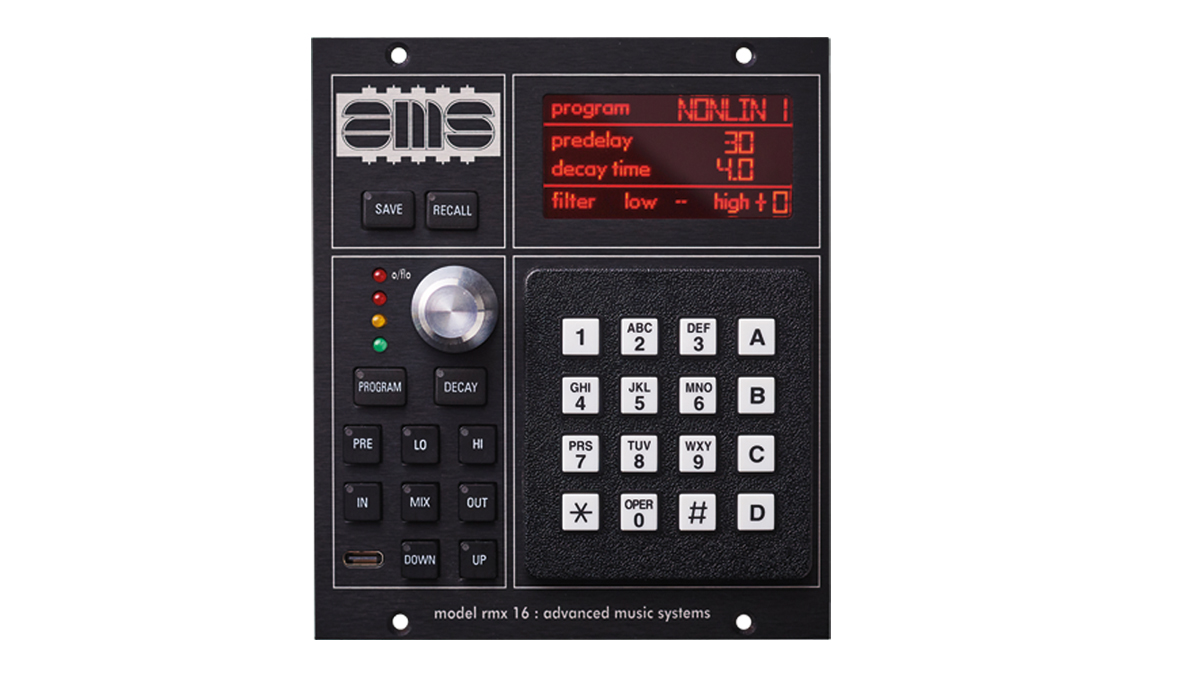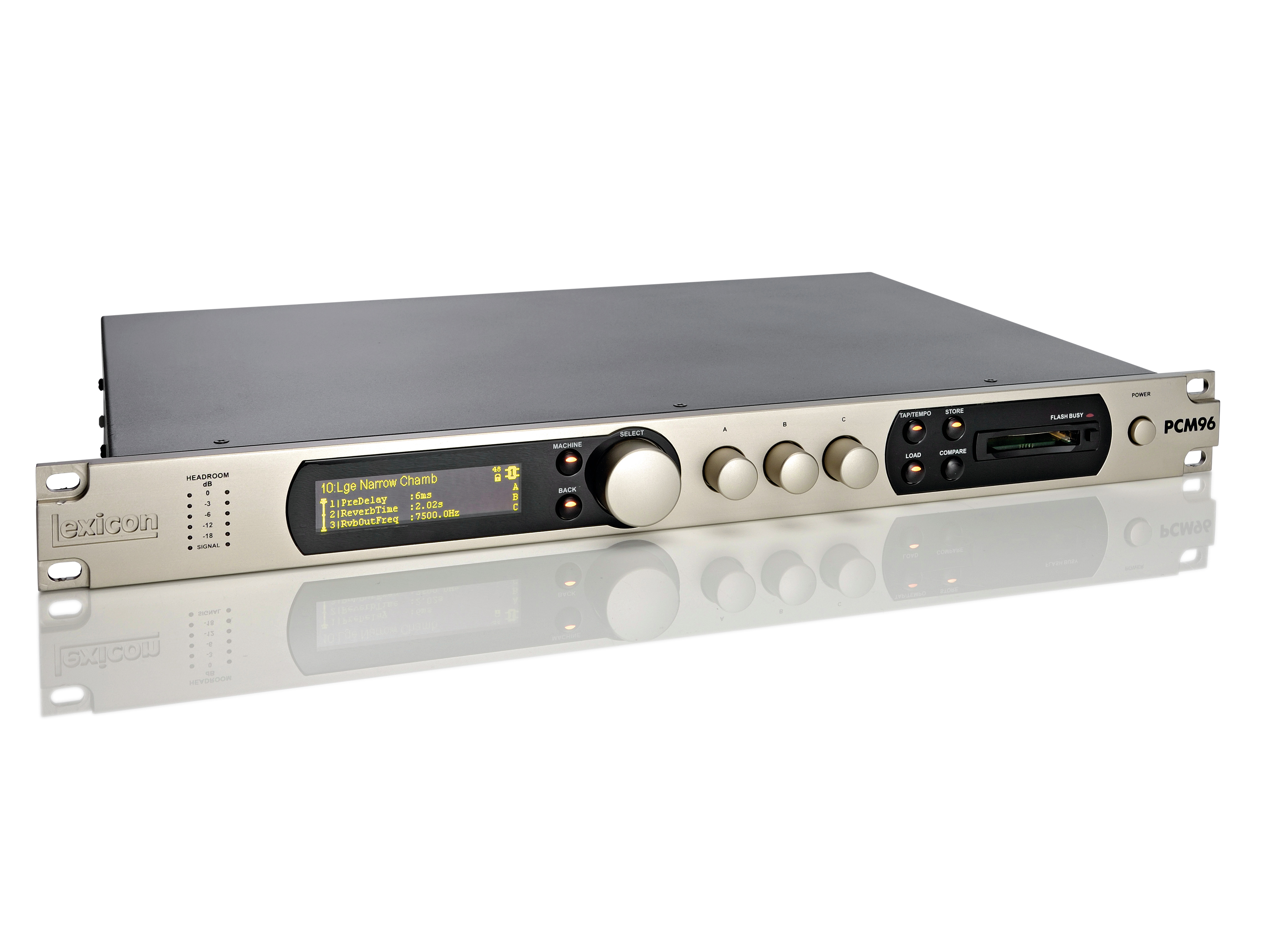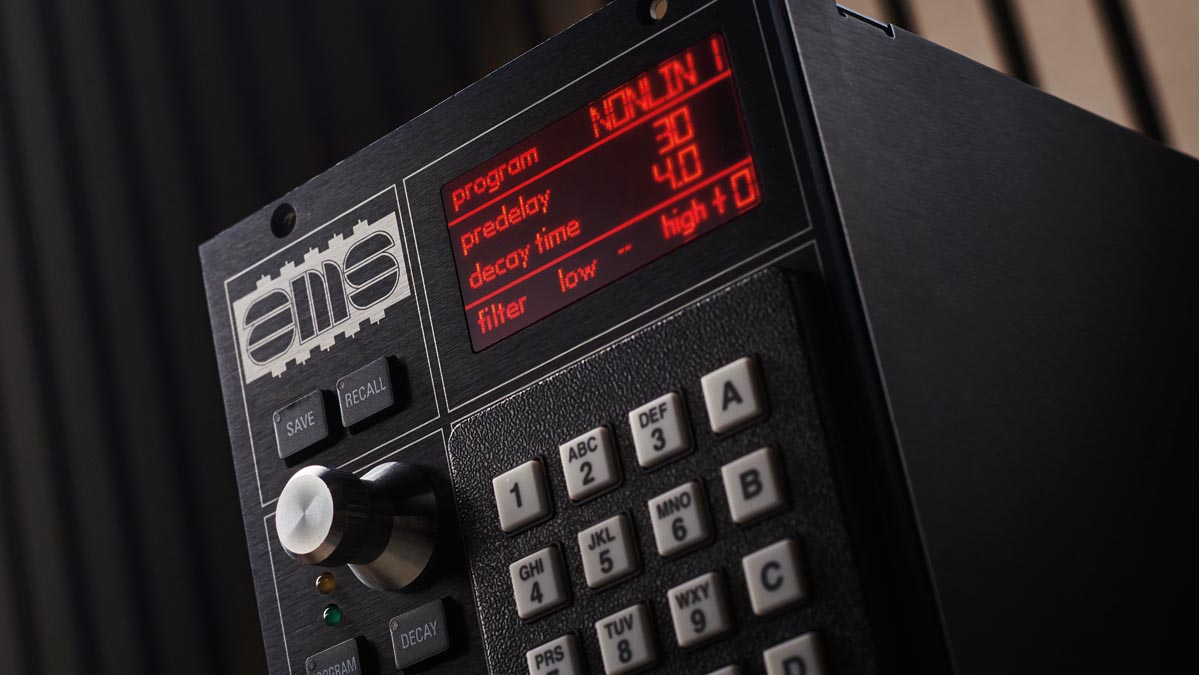MusicRadar Verdict
A 40-year-old digital reverb that can well and truly hold its own in the 21st century. This AMS classic has never been more relevant.
Pros
- +
All 18 original algorithms, including the legendary Nonlin.
- +
All the quality but none of the vintage servicing costs.
- +
Simple control set for fast results.
Cons
- -
User preset storage is a little fiddly.
- -
Eats three 500 series slots.
MusicRadar's got your back
What is it?
There’s an irony in reviewing a product that is, if AMS Neve have got it right, the same as it was 39 years ago.
Obviously part of ‘getting it right’ means making adjustments for the 21st century, the first of which is the shift into the 500 Series format, itself a ’70s invention (more irony).
This new model ports the original algorithms into 32-bit DSP, housed in a three-slot 500 series case. On paper, the only sonic difference comes from improved dynamic range and lower distortion.
The unit remains mono-in, stereo-out but the user storage slots have swelled from nine to 100. The new housing rearranges the controls with the original input and output knobs moved to parameters on the red OLED. In a nod to the ’80s, there’s a Pong-style AMS screensaver.
The core algorithms (Programs) combine the original nine with the nine additions made available via an after market barcode reader and remote control. The 18 Programs cover Hall, Room, Plate, Ambience, Chorus, Echo, Delay, Reverse, Non-Linear and Freeze algorithms as well as Image, a panning variation on the Nonlin types.

Performance and verdict
The Nonlin reverberations are sonically arresting and intensely artificial when mixed loud and proud, which works well with bold drum production approaches. Blended subtly they can lift a source without smearing other elements.
The distinctly unnatural reverberations the RMX 16 is capable of can, somewhat perversely, enhance the realism of an instrument or voice within a mix when tucked into place. The Plate, Hall, Room and Ambience are excellent exemplars in their digital fields. The latter two are capable of great realism and textural quality, the kind of reverbs you’d happily mix over 50% wet.
Each Program uses the Pre-Delay and Decay controls, but the High and Low filters are not universally available parameters. Initially this can feel limiting, but with familiarity, this becomes an asset; if the reverb isn’t working, then change algorithm.

• Lexicon PCM96
Great-sounding, realistic reverbs and some very useable weird FX.
• Dreadbox Hypnosis
A characterful box of delay and reverb, great for spaced out vintage synths and bass.
The simplest accolade I can give the RMX reverbs is that if this was my only source I’d be perfectly happy. The Delay and Echo programs are basic with regard to parameters but are great quality examples of each. Echo is the only program to use the A and B keypad buttons (C and D do nothing), which access the two separate left and right delay lines.
Freeze seems a redundant feature in the world of looping but the sheer simplicity makes it a fun tool for sound design. The Chorus is a unique example; based on randomised modulation of the five voices, and married with synths.
The two Reverse programs are highly creative effects that will find a home in many a drum/synth production. Outboard effects units of this quality are never cheap, so the £1k price tag does not feel excessive, though you ought to factor in the three 500 Series slots.
The effects, especially the reverb Programs, are unique to the RMX and you’ll be hard-pushed to find anything other than an original unit to fill its boots, a hefty purchase that would incur equally hefty service and repair fees.
If you want an outboard reverb and effects unit, I can’t recommend this enough; thousands of hits and four decades will agree.
MusicRadar verdict: A 40-year-old digital reverb that can well and truly hold its own in the 21st century. This AMS classic has never been more relevant.
The web says
"For all us engineers who will always prefer the hands-on approach of hardware to mouse-operated facsimiles, the modern yet authentic AMS Neve RMX16 500 Series is the only serious choice for top-notch, classy digital reverb."
MusicTech
"Having a solid-sounding digital reverb in a 500 rack is an awesome addition to any studio control room. No matter how DSP-complex, or if you’re running higher sample rates and large track counts in Pro Tools sessions, the RMX just works and always sounds the same—great!"
Hands-on demos
Producing Bonedo
Production Expert
Vintage King
Specifications
- Input: mono, balanced, ~20k impedance
- Output: stereo, balanced, ~150 impedance
- Headroom: >+22dBu @ 1kHz
- Dynamic range: 112dB @ 24dBu SNR: 82dBu 20Hz-20kHz +4dB
- Current draw: 0.2A max
- Contact: AMS Neve
“If they were ever going to do the story of Nero, probably the most decadent of all the emperors, they would have to use Roy Thomas Baker”: A tribute to the legendary producer of Queen, Alice Cooper, Journey and more
“Built from the same sacred stash of NOS silicon transistors and germanium diodes, giving it the soul – and snarl – of the original”: An octave-fuzz cult classic returns as Jam Pedals resurrects the Octaurus
What’s the buzz? Meet Yellowjacket, Cherry Audio's recreation of EDP’s trend-setting Wasp from 1978










